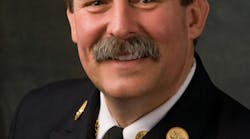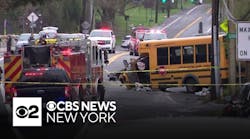By now, many of you have heard of (or seen) the Santa Clara County, CA, Civil Grand Jury report completed in May 2011. The report is titled Fighting Fire or Fighting Change? Rethinking Fire Department Response Protocol and Consolidation Opportunities. It’s interesting that the findings of this civil grand jury are suspiciously similar to recommendations made in recent years by a few consulting firms that openly pride themselves on finding ways to cut fire department budgets without, as they claim, negatively impacting public safety or firefighter safety. In addition, some of the findings are almost identical to positions taken by private-sector EMS providers criticizing the effectiveness and cost of fire department-based EMS systems.
The final report from the civil grand jury is a public document and is specifically made available to elected officials and others directly involved in policy decisions that affect the way fire departments do business. Therefore, no matter how much the front end of the civil grand jury process is politicized, the end result can (and most often will) be used to justify political agendas dating back years.
A significant shortcoming of the California Civil Grand Jury process is that there is a lack of clarity about who is specifically authorized to supervise the jurors. Also, any person or group that tries to influence the civil grand jurors in any way can be found to be tampering with the jury. Like other grand juries, the work of a civil grand jury is conducted in secret. Those who are at the center of issues under review are often not aware that the civil grand jury has even been seated. Who the civil grand jury wants to interview and what materials it wishes to review during the process are at its discretion.
In the Santa Clara County report, the civil grand jury claims city managers and fire chiefs were interviewed. If that is true, it’s obvious some of them were not well informed about their own systems, simply misspoke or were misunderstood. A reasonable person would come to believe the reasons for empaneling a civil grand jury can be highly political and, with very little oversight, the way the jurors choose to conduct their review can drive the process to pre-determined conclusions and findings. Although more than 30 states use the civil grand jury process, no state has authorized its grand juries the range of civil investigative authority that California has. One ray of hope in all of this is that only about one-third of the recommendations made by civil grand juries ever find their way to implementation.
To get a true sense of how the civil grand jury’s work mirrors recommendations made by others with an axe to grind, one simply needs to review the findings and recommendations made in the Santa Clara County report. Following is a very brief summary of some of them:
- Unions are more interested in job preservation than in providing the right mix of capabilities at a reasonable cost, using scare tactics to influence the public, and fostering firefighter unwillingness to collaborate with EMS
- Cities should determine the emergency response service they want to achieve, particularly as to the result, then determine how best to achieve that
- Contractually based minimum staffing requirements are not warranted and hinder fire chiefs in effectively managing firefighter staffing
- Cities that have contractual minimum staffing requirements should reopen negotiations with the unions to eliminate this term
- Using firefighter-paramedics in firefighting equipment as the first responder to all non-police emergencies is unnecessarily costly
- Fire departments should reserve the use of firefighting vehicles for fire events and enable the EMS contractor to be the first responder
- Fire department protocols should be modified to authorize, incorporate and use less expensive non-firefighter paramedics and non-firefighting equipment
These are only a few of the findings, but you get the point; some of them are all too familiar and represent biased positions taken in the past. Other operational and administrative recommendations are also part of the final report. A significant concern is that within the report is a clear suggestion that national standards should not necessarily be adopted or guide fire department policies and procedures for deployment, staffing, health and safety or most other things. for that matter.
We should always look for ways to better the fire service and make our service delivery and support systems more effective and efficient. The Santa Clara County Civil Grand Jury report contains a couple of suggestions that make sense and should probably be pursued – if they weren’t already being considered by some or all of the county’s fire departments.
The lesson we should take away here is more important than the content of the report. The lesson that’s clear is that any process with the potential to be politicized, up front and on completion, should be cause for the fire service to be concerned. We must understand that the process may not be geared toward improving public safety or firefighter safety.
One last thought: If we are ever called before a group charged with reviewing fire department policies and procedures, we must be well prepared and able to communicate our system design and service delivery models clearly and accurately. Failure to do so can result in painful results.






